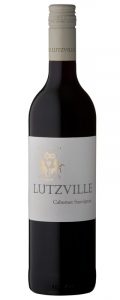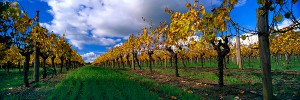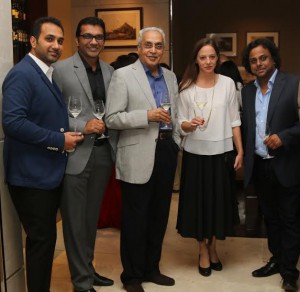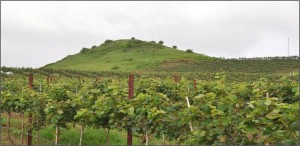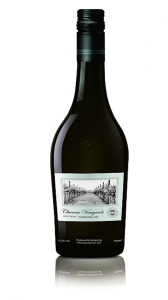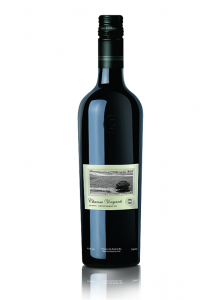As a family we have always had a very healthy appetite for good food and good drink since the time that I can remember so I am not surprised that life has led me down this path. Getting into the wine business was pure chance. I was sitting next to someone who got a call from Sula asking her if she would like to join the sales team. All I heard was “wine company” from the person at my side when I grabbed the phone and said “I don’t know who you are but I would like to join”. I got the job the next day and what followed was a spate of vineyards visits, international trade shows and countless tastings, all of which got me so wrapped up in the world of wine that I could not think of doing anything else. The world of wine is enormous and fascinating;especially in India because if you pay attention you can see the industry and the culture for wine develop right in front of you. I wanted to be a conduit for change in the wine and spirits world.
To say that the quality of Indian wines have improved dramatically over the last few years would be a gross understatement. It’s not just one or two wineries that have raised the game, instead it’s the leading wineries of India that have somehow through a collective conscious decided that pushing levels of quality is the way forward. I am probably one of the biggest fans of the Indian wine industry. I have been lucky enough to be a part of it since the time I joined Sula Vineyards almost 15 years ago at the age of 22.
The Indian wine industry has had many reasons to go through this metamorphosis. For one they far are more wineries than before which has created a competitive market scenario forcing wineries to raise their game in order to succeed. The second and the most important in my opinion is that consumers in India have evolved. Not only are they more consumers of wine but also they are also more discerning consumers. You cannot put plonk in a bottle and expect it to sell. Wineries constantly need to innovate to keep consumers engaged.
Three, the wine industry in India is very young, we’re learning every year. We’re figuring out which parcels of land have better soils and climates for wine production and understanding which grape can succeed. We have also brought in or developed the right talent and infrastructure to produce world class wines. The use of oak barrels to add complexity to red wine and to some whites is now commonplace. I’m not saying the industry has got it together just yet; there are many improvements to be made at every stage of the business whether its grape growing, wine making, selling and marketing.
In a span of roughly three decades the Indian wine industry has achieved a lot. It isn’t easy to change the habits of a drinking population that can’t see beyond spirit. Every wine producer knows that it is not only about creating a brand but it’s also about creating a culture for wine in India.
It is common for people, even some of the savviest wine consumers to dismiss Indian wines for their imported counter parts. This generalization needs to stop. Indian wine is on par or certainly better than some of the wine produced out there.Sometimes people pay Rs 2000 or more for a bottle of imported wine thinking that the price or country of origin denotes quality. While the country of origin may, not everything produced in any part of the world is good or even comparable to Indian wine. The price in India for the imported stuff is made up largely of taxes, India applying the highest duties in the world on wine, so price cannot be a measure of quality. Consumers need to be more aware.
There are number of specific wines that deserve a mention, these are the finest examples of quality that India is producing as of now that are being appreciated not only in India but gaining recognition at Wine Competitions in India and across the globe. Yes, Indian wines are winning awards in competitions held in London, the US and in Asia and now the number of wines winning awards is increasing and it is becoming more frequent. Indian wines are also exported all over the world even to countries that produce large and high quality wines themselves.
Indian wine is dominated in terms of volume by two to three wineries with the rest of the wineries combined taking the rest of the pie. But in terms of quality the scenario is not so polarized. There are smaller brands that are producing exceptional quality wine but they have not been around long enough or don’t have the marketing muscle or marketing brilliance that the more established wine brands have. What’s also interesting is that exceptional quality is being achieved in all wine styles as well, it’s not just the use of barrel for example that are giving our reds finesse, there is more depth to wine making now than ever before.
For example Charossa owned by HCC has created an exceptional Sauvignon Blanc, Viognier and Reserve Tempranillo. The Tempranillo is a break through and this wine demonstrates just what experimentation with grape varieties can achieve.Grover’s and Zampa have joined forces and have launched a wine called Chene, which means oak in French. A blend of Tempranillo and Shiraz, which is phenomenal. Grover’s La Reserve has been a long-standingquality Indian wine that one can bet on safely. Myra Vineyards, a winery that I am closely associated with makes outstanding Reserve Cabernet Sauvignon and Reserve Shiraz. Myra’s new wine called Misfit that’s about to be launched is even better.
The launch of Chandon from Moet Hennessy has created a market place for sparkling wine in India like never before. A true game changer that has done wonders for getting people interested in drinking sparkling wine. Also with Chandon’s success I’m hoping that it will pave the way for more international brands to set up wineries in India bringing in with them their expertise. Another sparkling called Casablanca is one to watch out for, well priced, very crisp and delicious. York winery in Nasik produces a barrel fermented Chenin Blanc that gives this grape variety more weight, their newly launched sparkling wine with its low alcohol strength is a delight and their flagship red Arros is pure indulgence.
Fratelli’s Vitae, Sangiovese Bianco, Chardonnay and Sette are outstanding wines. Remember before Fratelli, no one made wine at Akluj, which again is a representation of the fruits of experimentation not only with grape varietals but regions for producing grapes for wine making as well. Vallonné Vineyards produces a world class Rose, a dessert wine that you cannot believe and a selection of super Reserve reds from grape varieties such as Merlot, Malbec and Cabernet Sauvignon.
A winery that has understood the Indian palate completely in Reveilo, their Sangiovese and Reserve Cabernet Sauvignon and Reserve Shiraz have a steady following and their Late Harvest Chenin Blanc is sweet decadence. Oakwood a winery whose wines are yet to be made available produces an exceptional Sauvignon Blanc.
Sula constantly innovates and if I had to choose two from their massive portfolio it would be their Riesling and their solid Dindori Shiraz. Krsma a relatively new winery with an emphasis on small quantities and high quality is very exciting as well. Nine Hills from Pernod Ricard has changed things around to produce better quality wine in the last few years.
My apologies for what may seem like a barrage of wines and brands but I am truly excited, this Sommelier is watching wine become more important everyday. I’m happy that we can open bottles produced in India at prices that are within reach and that they are good and getting better. Remember we’ve only just begun, we’re babies on a global scale and we’ve reached this far in such a short period of time. And if India’s short vinous history has given us what we have today then the future looks very promising.
Sommelier and Founder, All Things Nice


